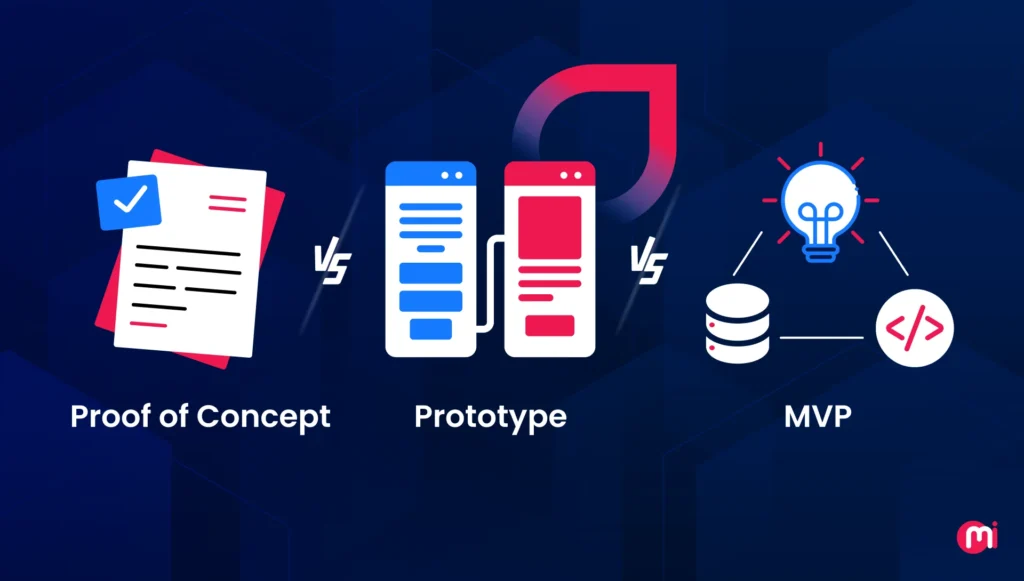Product validation is a critical step in ensuring the success of a product. It helps determine if an idea is viable, feasible, and meets user expectations. Understanding the differences between Proof of Concept (PoC), prototype, and Minimum Viable Product (MVP) is essential for successful product development. This article explores the distinctions between these concepts and guides you on choosing the right approach for your project.
Neglecting to validate the feasibility of a product idea can lead to wastage of resources and directionless development. To avoid this, it’s crucial to grasp the distinctions between PoC, prototype, and MVP. While a PoC is a small-scale experiment to test an idea’s feasibility, a prototype is a preliminary model of a product, and an MVP is the first functional version with essential features. These concepts help validate ideas, test technical feasibility, and enhance products based on user feedback.
PoC, prototype, and MVP serve different purposes in product development. To determine which approach is suitable for your project, it’s essential to understand their types, features, use cases, and best practices. By comparing and contrasting PoC vs. prototype vs. MVP, you can make informed decisions and progress in the right direction for optimal success.
A PoC is a small-scale experiment that tests the feasibility of an idea before committing significant resources to full-scale development. It focuses on core functionalities, identifies potential issues, and gathers feedback to inform decision-making. Key features of a PoC include clear objectives, limited scope, measurable success criteria, quick development with minimal resources, and internal use only.
On the other hand, a prototype is a preliminary model of a product designed to validate the idea, gather user feedback, and identify design flaws before development. Prototypes come in various types such as low-fidelity (paper sketches, wireframes), high-fidelity (detailed visuals), and interactive (early versions with partial functionality). The main reasons to use a prototype are to visualize how a software will look and function, test for iterations, design good interfaces, prove the value of a product, and align design and engineering teams.
An MVP is the first working version of a product with essential features to solve core problems. Unlike a PoC or prototype, an MVP is released to real users to validate market demand and gather feedback. Key characteristics of an MVP include minimal but functional features, adaptability for iterations, and real-world feedback. The primary reasons to use an MVP are to test a new idea, develop a product with known specifications, analyze market demand, attract early adopters, and gather feedback for scaling the product.
In summary, PoC, prototype, and MVP are sequential stages in product development, each serving a specific purpose in de-risking and validating product ideas. Understanding the differences between these concepts and choosing the right approach for your project is crucial for success. Whether you need to validate an idea, refine the design, or test market demand, selecting the appropriate approach can help you bring your product to market with precision and efficiency.

